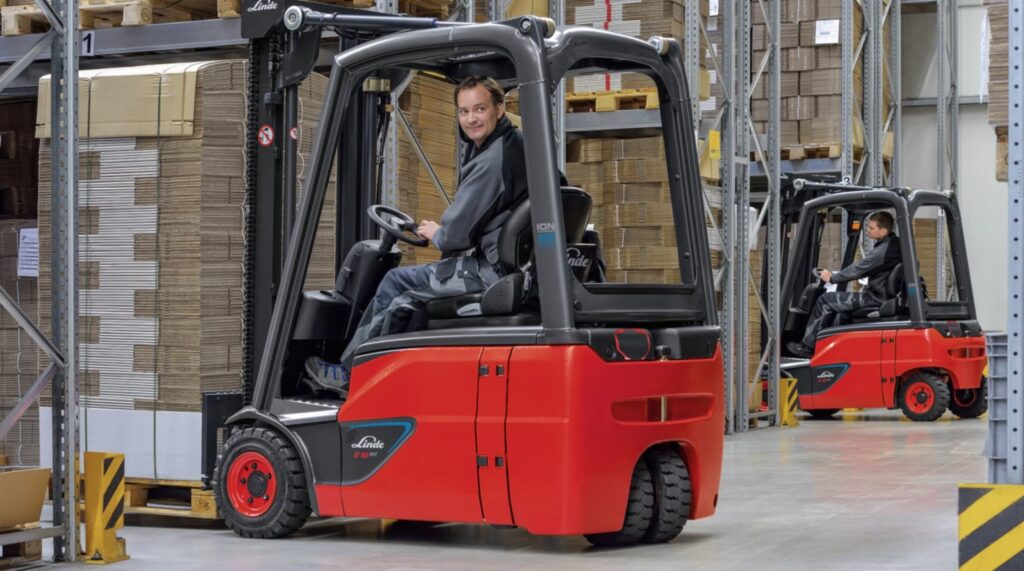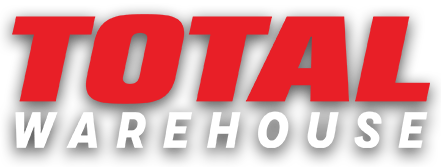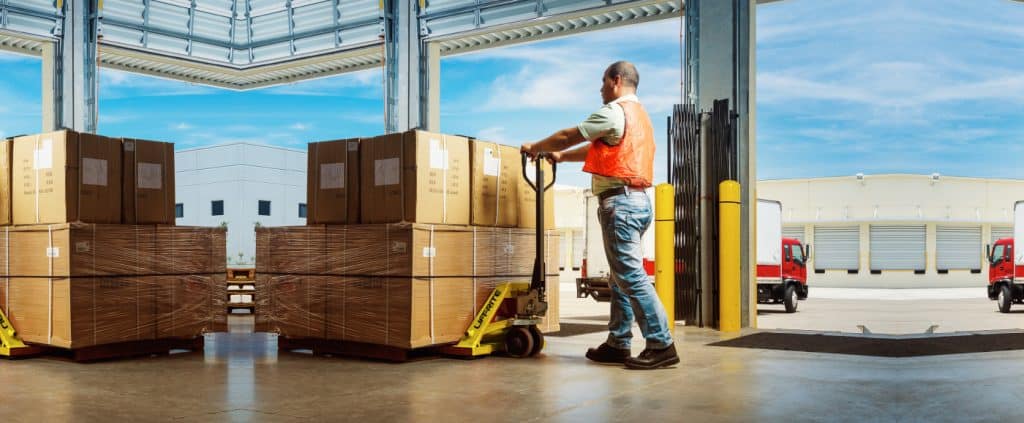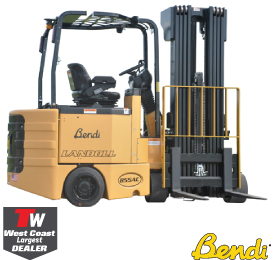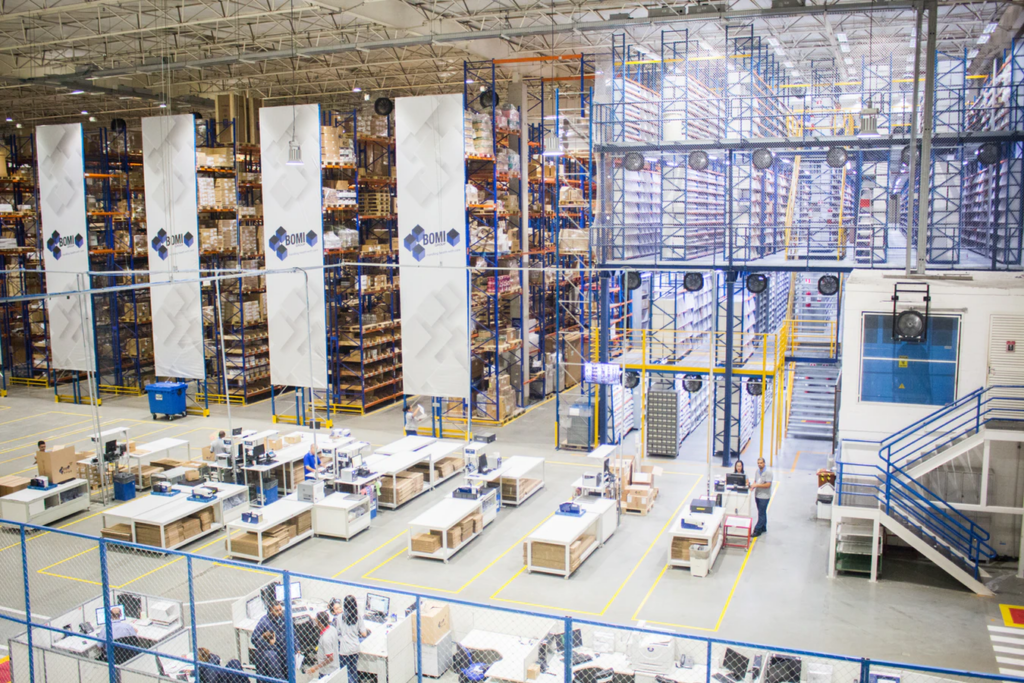In a world where industries rely on the efficient movement of goods from point A to point B, material handling equipment, especially forklifts, play a pivotal role. These mighty machines are indispensable for a variety of tasks, but it’s important to emphasize that operating a forklift requires proper training and certification for safe usage. Here, Total Warehouse will provide a concise guide on how to drive a forklift while emphasizing the importance of safety and responsible operation.
Before Driving
Before you even think about starting your forklift, there are crucial steps to follow for ensuring safety and efficiency:
-
Daily Pre-Operation Inspection: Start your day by conducting a thorough pre-operation inspection. This quick walkthrough helps you spot any signs of wear or damage that could compromise the forklift’s performance or safety. This step is essential for everyone’s well-being.
-
Know Your Machine: Familiarize yourself with the equipment. This doesn’t just mean knowing where all the controls are located, but also understanding the forklift’s total capacity. Being aware of these details is key to safe and efficient operation.
-
Fuel Check: Make sure the fuel levels are good to go. There’s nothing worse than realizing you need more LP tank while in the middle of a job. Keep those tanks filled and ready to avoid unnecessary interruptions.
-
Unique Features: Even if you’ve received prior training, take the time to get acquainted with the specific features and design of the forklift you’ll be driving and starting. Different manufacturers might incorporate varying elements, so never assume all forklifts are the same. If you have any questions, don’t hesitate to ask your supervisor and consult the operator manual for guidance.
Safe Driving Practices
When you’re behind the wheel of a sit-down forklift, remember that it’s an entirely different experience from driving your car. Here are some best practices to ensure safe operation:
-
Buckle Up: ALWAYS wear your seatbelt while operating the forklift. It’s a simple yet effective safety measure.
-
No Games: NEVER engage in any games or risky behaviors with the equipment. Your forklift is a powerful tool, and it should be treated with the utmost respect and responsibility.
-
Sound the Horn: ALWAYS sound your horn before proceeding through an intersection or when starting to move. This alert can prevent accidents and ensure that others are aware of your presence.
-
Yield to Pedestrians: ALWAYS give right-of-way to pedestrians in your path. Be attentive to your surroundings and ensure the safety of everyone in your workspace.
-
Visibility Matters: NEVER assume that your forklift is easily visible to others. Always drive with caution and maintain awareness of your surroundings.
-
No Multitasking: NEVER attempt to lift or lower the forks while in motion. It’s best to perform these operations when the forklift is at a complete standstill. This ensures better visibility and stability.
Always Stay Informed
In the world of forklift operation, it’s important to understand that operator training and certification are specific to the forklift class and application. If you find yourself using familiar equipment in a new location or work application, make sure to undergo training specific to those uses. Different workplaces may have their own rules and policies for safe operation, and it’s crucial to familiarize yourself with them before using your forklift in those environments.
The Total Warehouse Way: Achieving Accident-Free Logistics
Our aim is simple: to achieve logistics operations devoid of accidents. To realize this vision, Total Warehouse continually innovates safety features, intelligent assistance systems, and comprehensive training programs and consulting services. By integrating solutions that prioritize operator safety, we ensure secure intralogistics operations.
At Total Warehouse, prioritizing forklift safety for operators is paramount. Our products boast top-notch safety features and embody a “zero accidents” standard, reflecting our commitment to safety.
Essential Safety Practices for Forklift Handling
1. Forklift Operation License: Only certified operators who have undergone training should be permitted to operate forklifts.
2. Proper Operator Attire: All forklift operators must wear appropriate safety gear, including safety shoes, helmets, and jackets.
3. Daily Inspections: Before each operation, operators should conduct thorough inspections of the forklift, checking operating controls, mast condition, tire and fluid levels, and fork condition.
4. Floor Markings: Clearly delineate operating areas and walking paths in the warehouse to maintain safe zones and prevent obstruction of pathways.
5. 360-Degree Visibility: Linde forklifts offer exceptional all-round visibility, enhancing safety. Specially encapsulated lift masts and the Linde Protector Frame provide added protection against falling loads.
Ensure your forklift operators are safe with Total Warehouse’s OSHA-mandated forklift operator training classes, train-the-trainer, and truck familiarization.
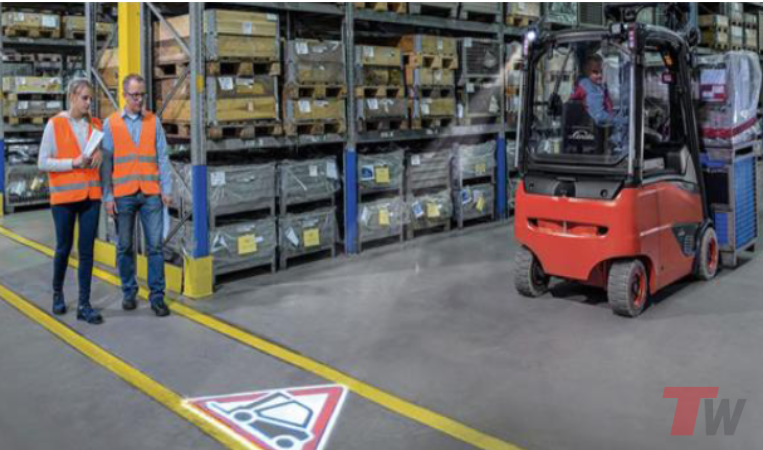
In conclusion, driving a sit-down forklift is a skill that demands precision, caution, and responsibility. By following these guidelines and always prioritizing safety, you can ensure that your forklift operations are not only efficient but also accident-free. Safe forklift operation is a win-win for everyone involved in the bustling world of material handling.
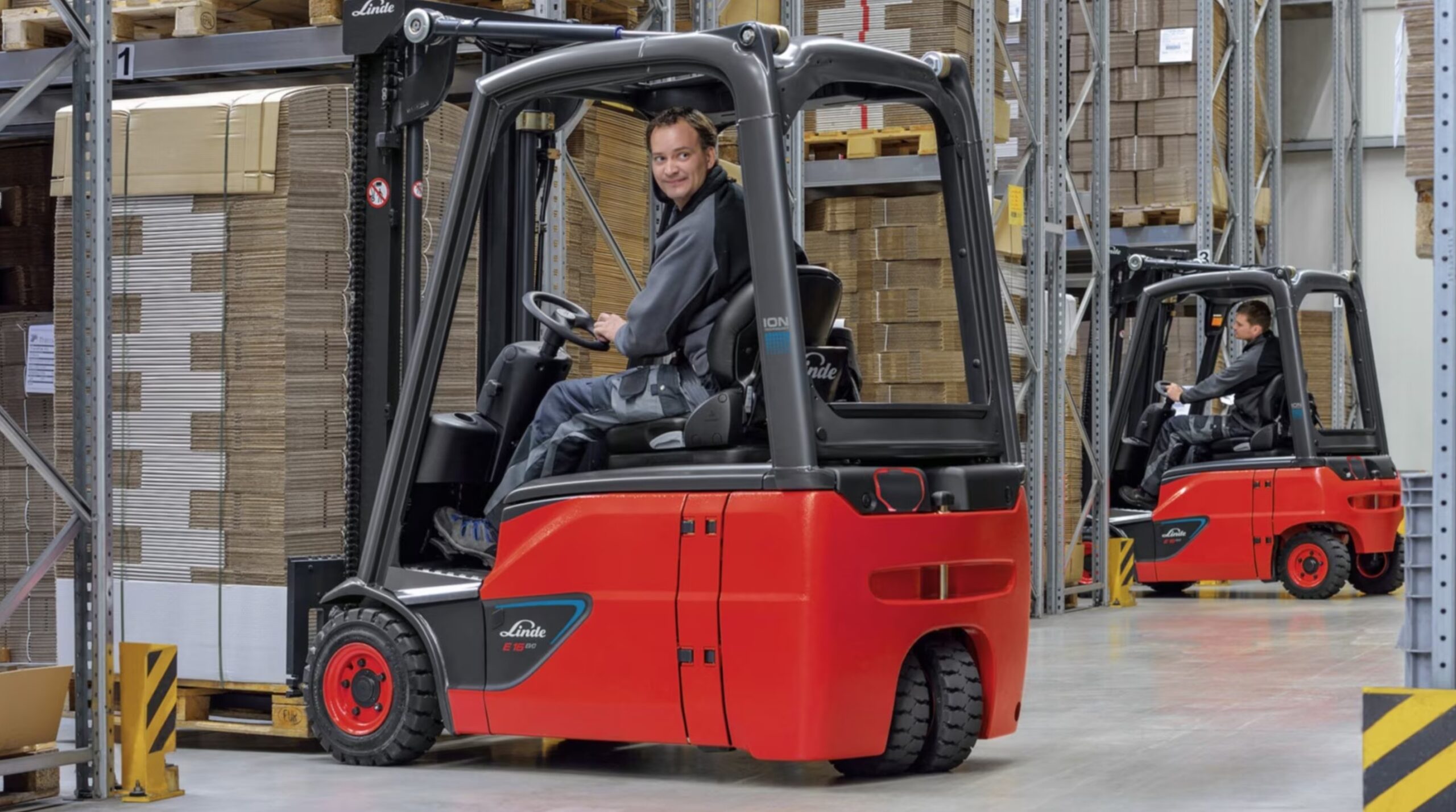
At Total Warehouse, we’ve helped countless businesses across the United States achieve lower maintenance, reduced costs, increased worker satisfaction, and increased economic sustainability by making the switch. Our team of highly knowledgeable experts can help you make the right decision for your business. Give us a call at 833-868-2500 or contact us online.
